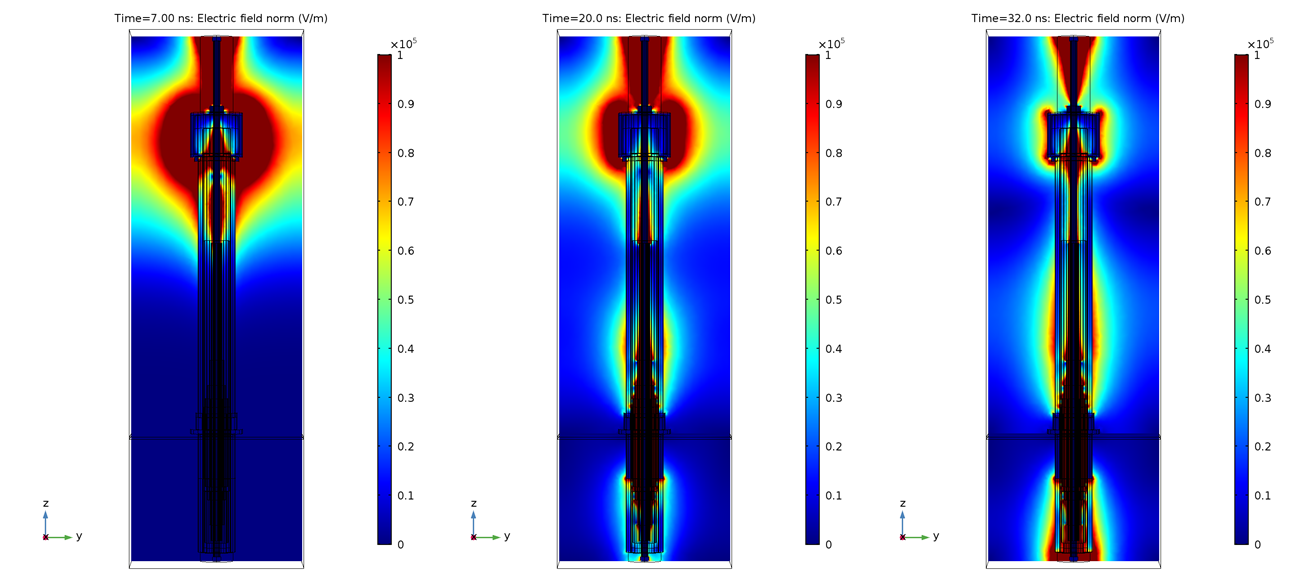An EMP driven by high-energy photons has fast rising amplitude, and usually takes a few nanoseconds to reach the peak. If it happens at high-altitude, like what happened with lightning, the electromagnetic field will propagate to the surface of the earth. Because of electromagnetic coupling, conductors within the electromagnetic field would have induced current and voltage. This would cause problems for the electric utilities, such as power grid, generators and transformers. The research focuses on the impact of EMP on transformers. A transformer model was built within a tank and its two leading wires were connected to two ports in the top and the bottom of the tank. Finite element analysis (FEA) is conducted on the 3D model by applying a high amplitude and short-lasting pulse to the port. By taking advantage of FEM simulations, the travelling of EMP in transformers and bushings becomes visible. Fig.1 shows when applying an EMP to the top port, the electromagnetic wave travels down to the transformer and propagate along the transformer windings. Fig.2 displays the top view of electric field norm on a slice between the first and the second layer of winding. In real cases, to reduce the impact of EMP on the internal windings of a transformer, bushings are added as protection components. If an EMP comes along the transmission line, it would pass through the bushing first. Therefore, 3D bushing models are also established to simulate the transient process. Fig.3 illustrates the EMP wave travelling through a bushing from the top to the bottom port where a transformer winding is supposed to connect.

Fig. 1. Side view of a 3D transformer model with EMP excitation

Fig. 2. Top view of a 3D transformer model with EMP excitation

Fig. 3. A 3D bushing model with EMP wave travelling through


